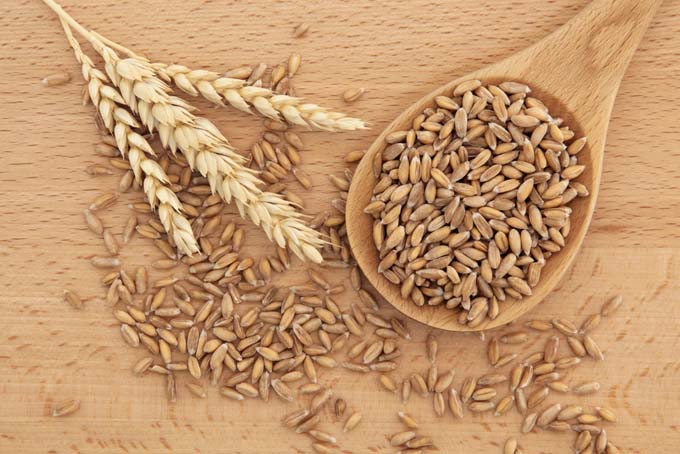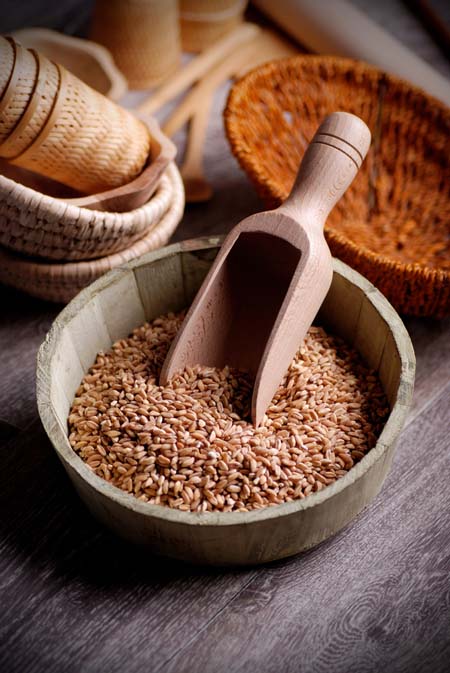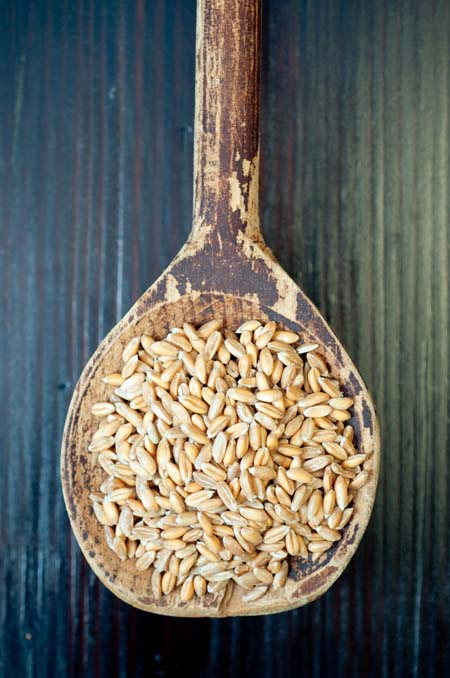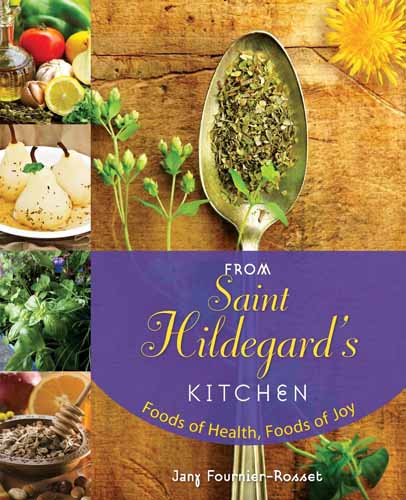We occasionally link to goods offered by vendors to help the reader find relevant products. Some of these may be affiliate based, meaning we earn small commissions (at no additional cost to you) if items are purchased. Here is more about what we do.
Originating in the Fertile Crescent, spelt is now enjoyed by consumers everywhere. One of the original seven grains appearing in the Bible, spelt has literally been harvested for thousands of years.

Spelten cakes prepared for the journey out of Egypt sustained Moses and the Children of Israel; Roman soldiers carried it with them as a integral source of sustenance while on tour, and immigrants transported seeds into new lands around the world protecting them as they would a valued possession.
In Europe, spelt remains the most sought after grain. The people of southern Germany refer to it as dinkel. An important German crop, it thrives in this mountainous area because of its altitude and climate.
For Germans, this is THE grain of choice, and in Italy, the berries (known as farro) are a favored ingredient in countless gourmet dishes.
Cultivation of this once widespread grain remained popular until the 19th century when spelt fields were replaced by wheat crops.
Advances in technology and modern farming were the reason for grain’s fall from grace in the agricultural sector, for no other reason than wheat could be harvested in a single process, whereas spelt requires the extra step of removing each nugget from its hearty outer husk.

Economically, wheat was a better choice for the farmer, and a change that seems to have been easily accepted by the consumer. The wheat crop added to the farmer’s pocketbook because it was easier to grow and harvest; it added to the consumer’s pocketbook because it was cheaper to purchase.
Wheat was a win-win situation for everyone, but unfortunately wheat will never replace spelt in either taste or nutrition.
Nutrition
Boasting a sweet and nutty flavor, the grain is as nutritious as it is tasty. Higher in nutritional value than wheat, splet is also higher in water solubility, which aids in digestion.
Its naturally occurring amino acids build protein and work as building blocks to protect our cell membranes and muscles. The berries contain high amounts of protein (three and a half ounces of grains contain eleven and a half grams of protein), are low in phytic acids, and are an invaluable dietary source of nutrients, especially for those with wheat allergies.
Take note that the berries do contain small amounts of gluten and should be avoided by those with Celiac Disease.

High in fiber, spelt promotes activity in the intestines by surrounding unwanted substances (cholesterol for one) and flushing them out the body. It is also rich in silicic acid, which serves to strengthen body tissue and promote healthy hair, skin and nails.
Other health benefits include the grain’s high content of potassium, calcium, magnesium and iron, as well as the trace elements silicon, phosphorus and fluorine.
St. Hildegard
Hildegard von Bingen, also known as St. Hildegard (though never formally canonized), founded two convents, wrote music and plays, and authored two books, which were published around the year 1150. Together, these books are known as the Liber Subtilatum.

From Saint Hildegard’s Kitchen: Foods of Health, Foods of Joy
Considered a notable medieval herbalist, St. Hildegard promoted spelt coffee and porridge, regarding both of these preparations as irreplaceable items on the daily menu. She believed that the consumption of spelt balanced intestinal flora.
She also made note of its nourishing properties, considering them to be invaluable for neutralizing the functions of the intestines, crediting the grain as a remedy for both diarrhea and constipation. In the Liber Subtilatum texts Hildegard describes spelt’s benefits in the following way;
The spelt is the best of grains. It is rich and nourishing and milder than other grain. It produces a strong body and healthy blood to those who eat it and it makes the spirit of man light and cheerful. If someone is ill boil some spelt, mix it with egg and this will heal him like a fine ointment.
How Its Used
Available for purchase at most health food stores, markets, and even from Amazon, splet is available in three forms.
Spelt Coffee
The first, spelt grains, may be used in the preparation of coffee. Brown roasted grains afford coffee an irresistible aroma, and dark roasted spelt grains are responsible for giving the brew its rich, lustrous color.
When combined, these grains create a delicious morning beverage that is simply prepared if you’re willing to put the time in and wait for it to reach its full flavor.
To begin, start by grounding your mixture. Four cups of brown roasted spelt blended with one cup of dark roasted grains may be ground ahead of time and stored in an airtight container.
To make coffee you won’t need any particular gift in the kitchen, but you will need patience. Although easily prepared, spelt coffee is a bit of a waiting game, but most certainly worth the wait.
To make the coffee, begin with four tablespoons of the ground mixture. Boil the grounds in two cups of water and strain, mix in another tablespoon of grounds and allow to cool overnight. The next morning (or when you have the time), boil the coffee mixture for another three to five minutes, strain, and add another tablespoon of grounds.
Repeat this process three times, refrigerate your supply, and warm with milk and honey when feeling the need for a comforting boost.
Your concoction will safely keep in the refrigerator for up to two weeks, although most people prefer to adjust the recipe and make enough for only one week at a time.
Berries
Another form of spelt available for purchase is a coarse grain.
When thrown into a food processor or grinder (leave on coarse grind setting), the berries may be soaked and cooked into a bowl of nut-flavored porridge. If you have a sweet tooth add some raisins or dates, and if nuttiness is your true passion………… complement the porridge’s nutty taste further by adding your “nut” of choice.
Foodal recommends Bob’s Red Mill Organic Spelt Berries. Bob’s is great organization with a commitment to quality.
Flour
Flour is third form of spelt available to consumers.Used in high nutrition baking, spelt flour can be used to replace other flours in most of your baked good recipes. It serves exceptionally well as a whole wheat replacement.
It can be freshly ground at home using a small manual or electric flour mill or you can purchase pre ground spelt flour.
For me, this means using it according to individual taste. I’ve used the flour in my favorite chocolate chip cookie recipe and also to make my mother’s world-renowned apple cake.
Both of these experiments were successful, and when trying to bake a treat that is a true indulgence and healthy to boot, I am willing to try almost anything once. The flour kneads easily by hand or when using your favorite stand mixer.
The upside, because of the coarse and hardy hull, pesticides are not necessary for the grain’s cultivation. Checking the label is advised, but most spelt products are organic (disregard this claim if purchasing a spelt four combination).
Bob’s Red Mill Organic Spelt Flour, 24-Ounce (Pack of 4)
On a final note, spelt is often used as a meat replacement. Veggie burgers are frequently made from soaked and softened berries (or in a combination with beans), are free from the unnecessary presence of fatty meat, not to mention that the difference in taste between spelt and ground beef isn’t overly discernible.
Whether you’ve chosen a vegetarian lifestyle, have been placed on a meat-restricted diet or are simply looking for new and better ways to improve your diet, spelt is a delicious option.
Source:
The Complete Guide to Natural Healing, International Masters Publishers, @ MCMXCIX




This is a very interesting article. I have never heard of this grain, which is a shame too since it sounds like it provides more benefits than most other grains out there. I am very interested in finding this grain and purchasing it. I think my daughter would enjoy this since she is a vegetarian and I’m always so worried that she is not getting all the proper nutrition she needs.
Kenna25- My first experience with spelt bread came when I found it freshly baked in our local Polish produce market. The entire family loved it, and we’ve been hooked ever since. I generally bake my own bread at home, but it’s nice knowing there’s a market nearby that will take care of that for me!
I’ve seen spelt in the supermarkets and also some products like bread, but there was never anyone to ask what the difference was or why it was better if it was.
Next time, I will try it as it looks like an affordable way to use organic products in your everyday life.
Organic spelt is definitely a healthy and economical choice. The next time you run across it in the store….. give it a try!
I really like spelt as an alternative flavor. It can really add a different dynamic to certain dishes. I don’t think I have ever had it as a meat replacement, though. I would be interested in looking up recipes because I try not to eat meat every day if I can help it.
meteredlines- My husband loves veggie burgers! Me? Not so much. I have a recipe at home for spelt burgers you might be interested in. I’ll make myself a note to pull it out of the cupboard and share it with you.
I have never had spelt before, but i have seen the bob’s red mill versions in the health foods section at our local Kroger. It sounds as though it would be really good so the next time I go grocery shopping I am going to get some and try it out. I am always looking for healthier grains to feed my family.
Ally79- I think you’ll be extremely happy with your purchase! let me know how it works for you…..
I use spelt regularly in the sourdough bread I make myself; I mix it through regular wheat flour as it makes the bead a little dense on its own. However, the spelt is what gives the bread its lovely flavour, and it really is good!
I was very interested to read what you’ve written about St Hildegard – I’ve studied this lady’s writings and music in the past, and she was one strong lady for her time. In an age where women were very much beneath men, St Hildegard was often consulted by bishops and even popes. I’m interested in her spelt coffee, and I will research that further as a means of getting some extra nutritious value from this excellent grain
Portia88- I’ve never used spelt in sourdough, what an interesting addition! On another note, Saint Hildegard is definitely worth the study, she was a fascinating woman. As far as her spelt coffee, I’ve taken to adding ground spelt to our coffee at home; one part ground spelt, to three parts conventional coffee. It’s not only delicious, but nutritious as well. A win/ win situation.
Unfortunately whole grains aren’t used regularly enough. Flour is a lot cheaper, widely more available and perhaps easy to cook with. there are a wide number of health benefits to using whole grains that the majority of people miss out on.
Kittyworker- AGREED! I’ve been making my own bread for years, and it took me up until about five years ago to throw away the standard white flour in favor of experimenting with different grains. Brown bread would be the only exception to that rule, as my grandmother’s recipe calls for a number of different grains. Whole grains are extremely important to our overall health, and I’ve actually seen prices going down. Notably, organic grains remain high. I suffer those costs regularly, but I also believe they’re worth it.
Being blood group o+…the doctor had to change my diet and one of the grains he suggested should be in my meals is spelt…the bad luck is, its not locally available…just sad, but i know of a grocer’s shop way up in the up-market area, i think i’ll do my best and make a trip up there, i just might get lucky…a very interesting article this is 😉
Dianethare- Spelt bread is both healthy and delicious….. I think you’ll love it. I mentioned in an earlier comment that I often purchase spelt bread at our local Polish grocery store. They make it fresh and preservative free….. it’s fantastic. I also bake a lot of bread at home, but every loaf is different. I run through the entire repertoire before starting over again. None-the less, if you don’t have any luck, you can always use the link provided above for Bob’s Red Mill Organic Spelt Flour. It is carried in numerous grocery stores, but even better, you can order it online.
Thanks for commenting! 😀
That’s very interesting about type 0+ blood! My husband and daughter are the same blood type and don’t tolerate American wheat very well at all. It never occurred to me that it could be their blood type! So thank you!
This is a great article on spelt…I have been wanting to learn more about it for awhile now and your article has a lot of good information on it. 🙂 I have seen people posting on Facebook about how they can eat spelt even though they have a gluten intolerance, but I haven’t had a chance to really look into it yet. After reading your article, I think I might try it!
seenbyiandi-
Thank you for your note. I’m glad you enjoyed the article! As for the rumor that spelt is gluten free….. it’s not. It might be true that spelt can be tolerated by individuals with gluten intolerance, but it does contain gluten, and those with an intolerance should take care. Unlike most wheat flours, spelt is water-soluable, and thus easier to digest. It might work for some as a substitute, but I wouldn’t recommend for those with actual wheat allergies or celiac disease.
Thank you for stopping by!
This is one of those things that I know I must have had one way or another but I have never directly used in a recipe. Any starter points or suggestions for use? Are there breads where using spelt flour would help the bread shine as opposed to just being a substitute?
Joan- I’m not sure, I don’t usually flours when baking. I’ll look into that and get back to you. Although, I will of course experiment with what I find before making any recommendations! I’ll be back! 😀
I can’t believe I am almost 40 years old and I have never heard of Spelt. I remember hearing them talk about making bread without yeast for the trip. But I don’t believe they ever mentioned what it was made of. It actually bothers me a little that its been around for this long, and its so versatile, yet this is the first place I ever heard of it. I’m going to watch out for it, definitely. Thank you!
Kana-Marie- Definitely keep it in mind…. I’m pretty sure you’re going to love it! Thank you for commenting!
I’ve heard of spelt over the years, but, as far as I know, have never tasted it. I have also heard of farro, but didn’t realize they were related. I’m looking to eat healthier, and wheat seems to set off my autoimmune conditions, so this is something I will look into trying in the near future. Being able to cook/bake with it is exciting to me, since I’ve been looking to move away from wheat flour, but wasn’t quite sure in which direction to move.
Diane- I gave up wheat flour and refined sugar about two years ago, and outside of an occasional lapse or two have pretty much given them up for good. We’ll blame my mother’s gift at baking for those lapses, and when she’s in charge of holiday desserts….. I’m there. None-the-less, I’d still choose spelt bread over any other….. it’s nutty, not too soft, and most of all it’s gratifying.
Lynne- Your email isn’t working…. get in touch when you can. I have something prepared I’d like to forward you!
Thanks, Jill
Lynne- I’ve tried to get in touch with you a few times today, but your email isn’t working. Get in touch when you can, I have something ready to forward to you.
Jill
I’ve just started looking into alternatives for wheat as my husband and daughter don’t react well when they eat it (in America anyway) and I’m really surprised that not only does spelt have protein, but all of the digestive benefits including the thought of regulating flora. Its extremely enticing to me. I’ve had digestive issues for over a decade and would love to naturally treat it. I’m definitely going to first see if I can find a bakery around that sells premade, then when I get unpacked (we just moved) and find my mixer and bread pans start experimenting! Thank you for writing about this!
GritsGirl81- I’m happy you’ve found the information on spelt useful. Hopefully, it will provide you with some relief for your family. You husband and daughter have only acquired wheat issues while in America? That’s something to think about….. where are you from originally? It would be interesting to compare farming techniques…. have you tried organic wheat products? Just a few thoughts 😉
My mother is from Ireland my parents hold dual citizenship so we go back and forth. We were visiting family in France last summer and my husband ate so much bread I thought he may explode! And nothing. Not one problem. I’ve recently found out about the potassium bromate added to many flours and breads here that’s a no-go in the EU… but I have always baked with organic flour so I am not sure that’s the issue in my house. It’s really been an interesting adventure of learning! But it really stuck with me that spelt was used primarily until the 19th century. I found that quite fascinating and it’s only added to my need to research. And I like the idea of going back to roots. I’m excited to play in the kitchen now! You’ve inspired me!
gritsgirl8- I am happy to have inspired you! Like you, I’ve been making it a mission to embrace the natural….. and get back to basics. The research is fascinating and the results are inspiring. Thank you for coming back and commenting…. I envy your dual citizenship! 😉